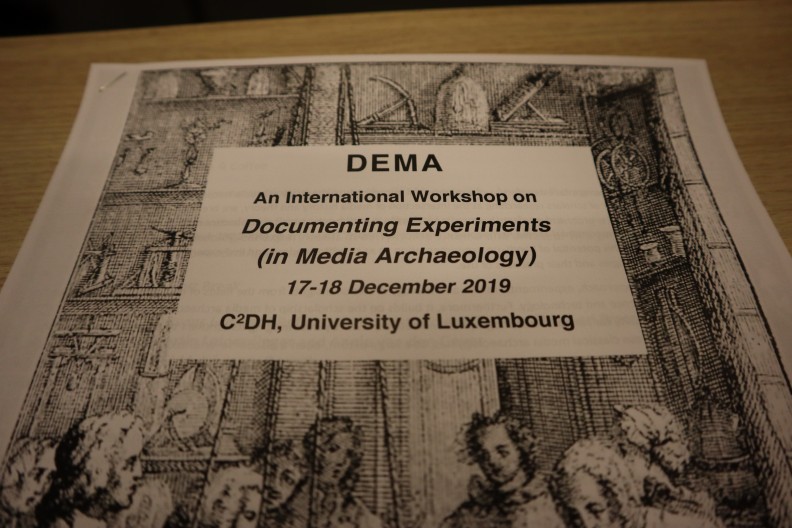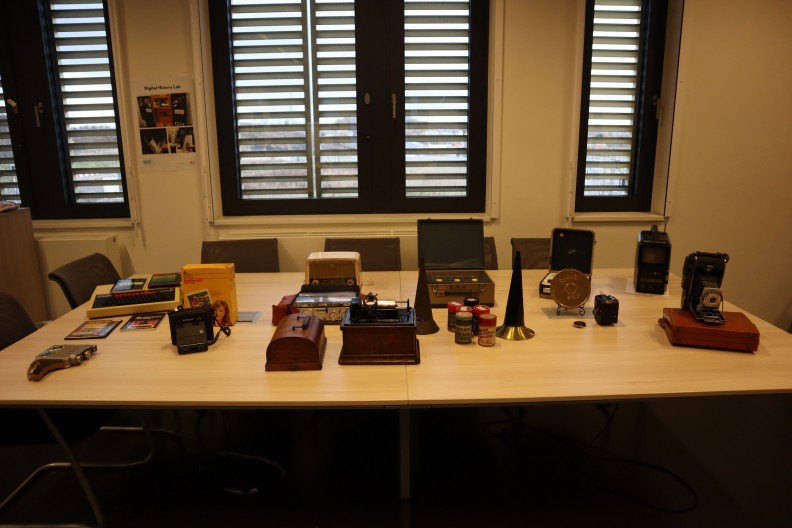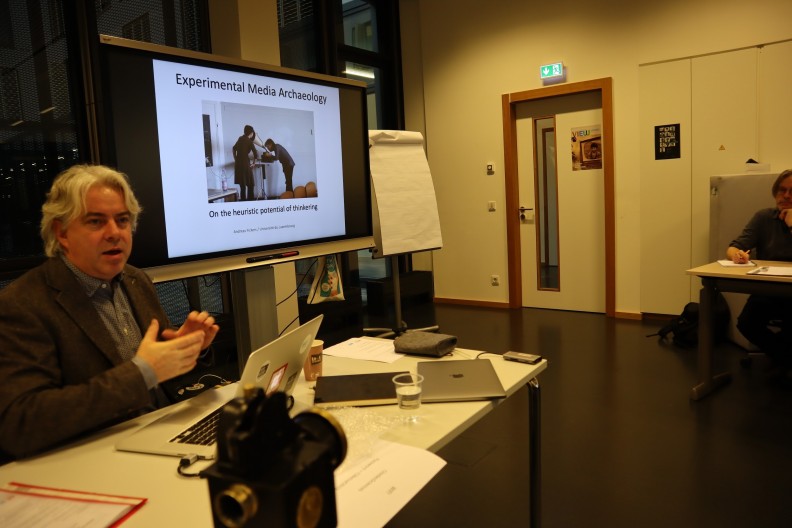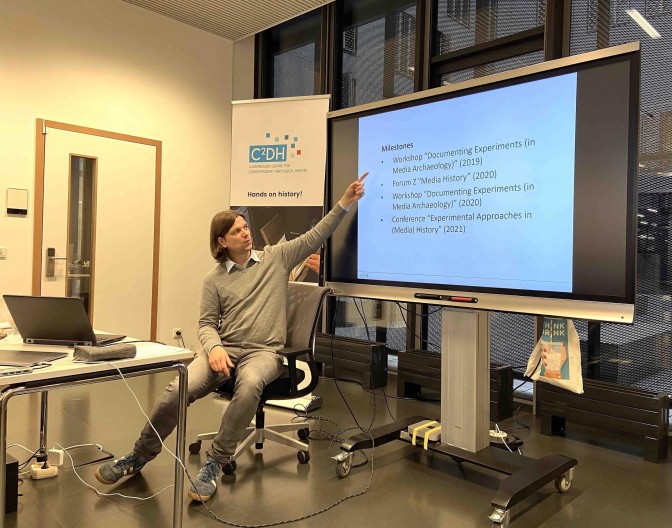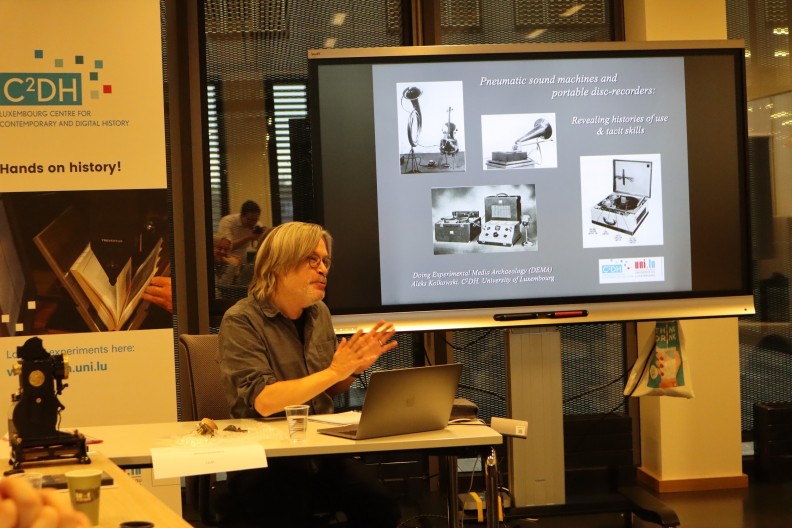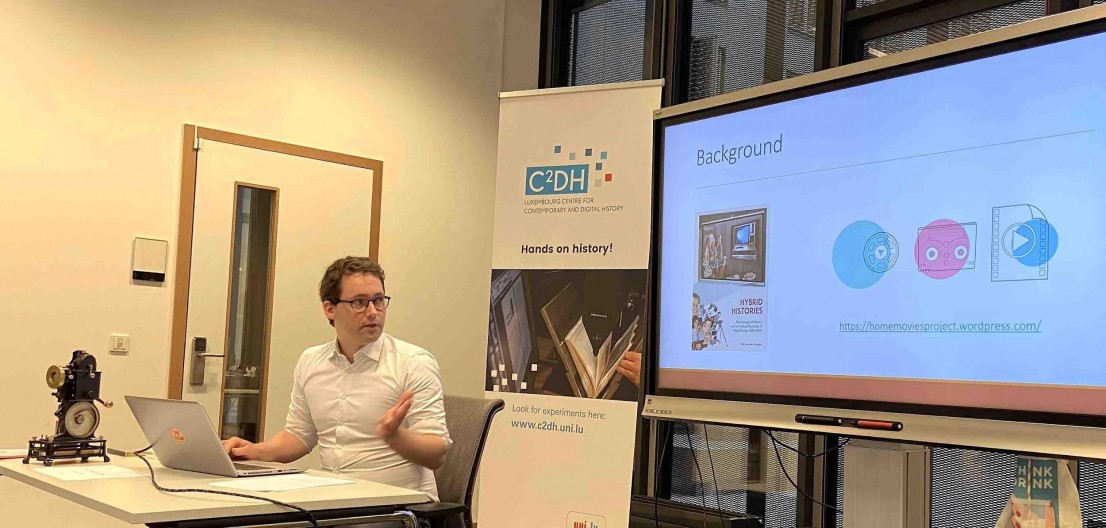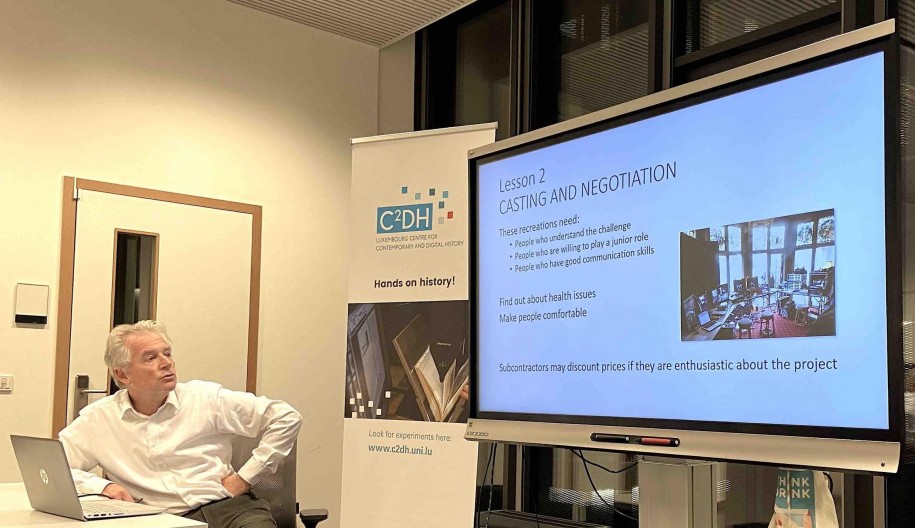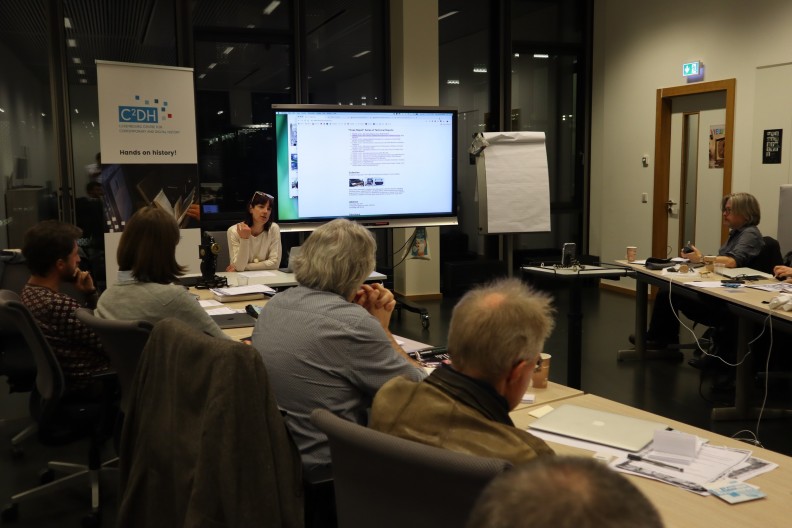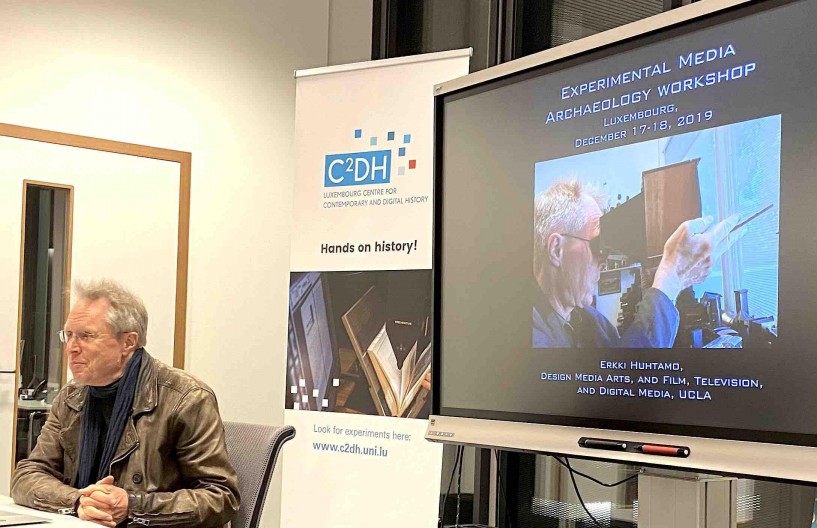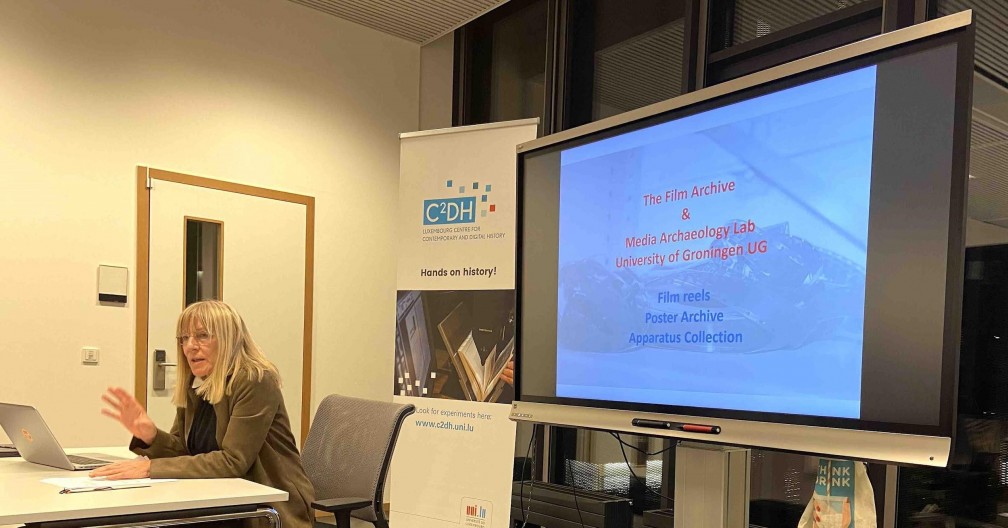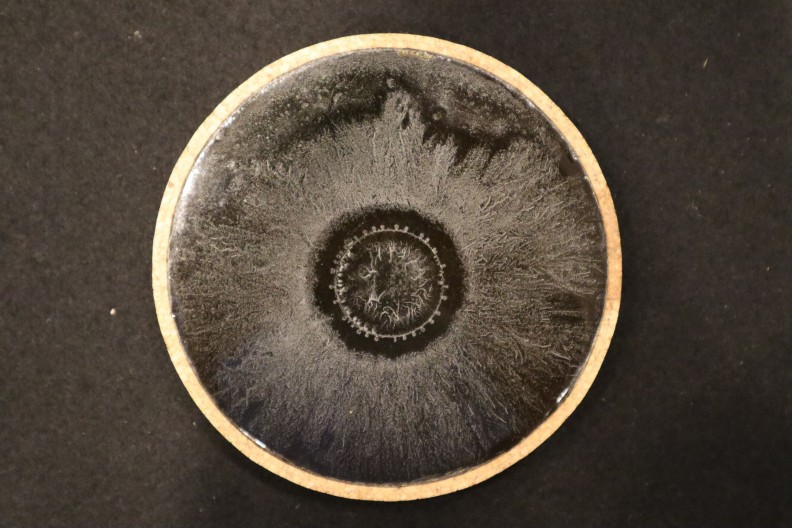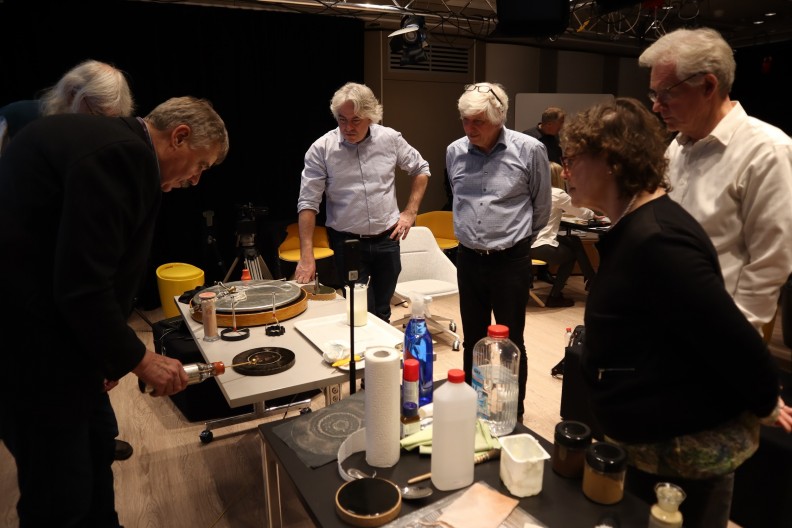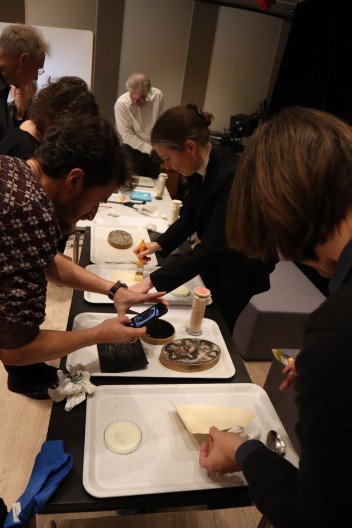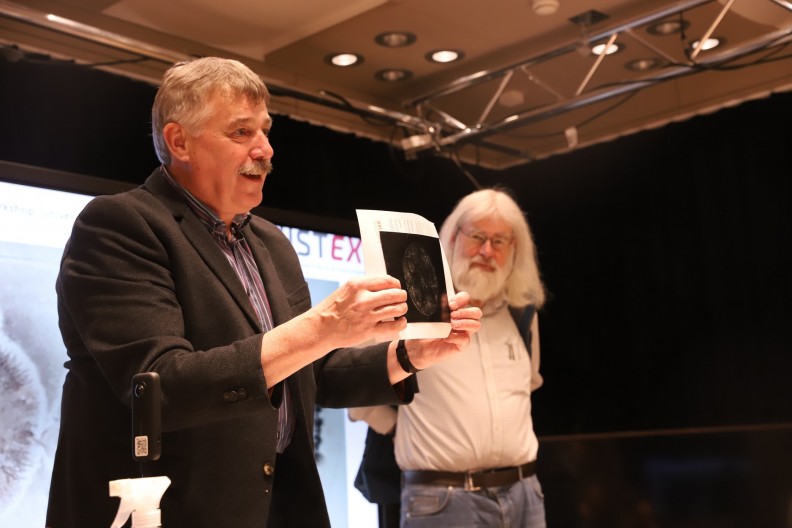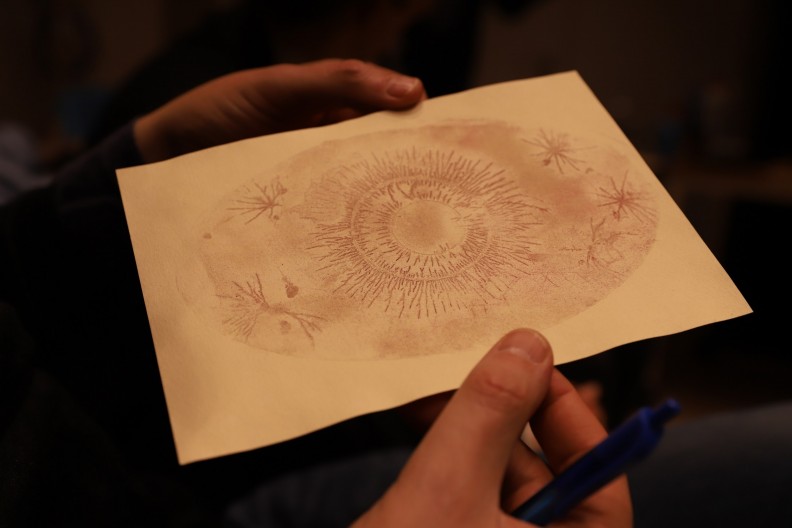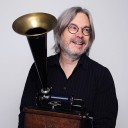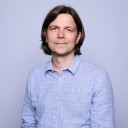What approaches, methods and techniques are there for documenting historical re-enactments and experiments? Which best practices and “artful failures” can we distinguish? What documentation tools can we use, what are their affordances and limitations? How can we learn from other disciplines in documenting hands-on experiments? By addressing these fundamental questions, the DEMA project team organized a two-day workshop to reflect on, share and exercise documentation practices in hands-on experimental research. One of the aims of the workshop was to contribute to the development of a best practice guide and protocol that we can use for documenting our media archaeological experiments in the DEMA research project.
Aside from the DEMA team - Andreas Fickers, Stefan Krebs, Aleksander Kolkowski and Tim van der Heijden - participants were the project’s advisory board members John Ellis (Royal Holloway University of London), Lori Emerson (University of Colorado, Boulder), Erkki Huhtamo (UCLA), and Annie van den Oever (University of Groningen) as well as invited guests Falk Rieß (University of Oldenburg), Wolfgang Engels (Histex GmbH / University of Oldenburg), Leslie Carlyle (Universidade NOVA de Lisboa), Julia Kursell (University of Amsterdam), Benoît Turquety (University of Lausanne), Ludwig Vogl-Bienek (Philips Universität Marburg), Karin Bienek (Illuminago, Frankfurt), and Tim Boon (Science Museum London).
A full report of the workshop on documentation practices in media archaeological experiments, including lessons learned by the DEMA advisory board members, presentations by the invited specialists, discussions and reflections on historical experiments, can be read at the DEMA website here: https://dema.uni.lu/documenting-media-archaeological-experiments-report/.
Images of invisible traces: a hands-on practical experiment
This blog post will specifically report on a historical re-enactment of an 18th century physics experiment, led by historians of science Emeritus Professor Falk Rieß and Dr. Wolfgang Engels from the University of Oldenburg, as part of the second day of the workshop. In their presentation, entitled “Images of invisible traces: The repetition of historical experiments producing (and reproducing) Lichtenberg figures”, Rieß and Engels gave a demonstration of this ground-breaking physics experiment on the uncovering of electric discharge patterns and attempts to preserve the results by means of different methods, both antique and modern.
They started by giving a short history of the phenomenon, and the persons that played a decisive role in its development. The central historical figure is Georg Christoph Lichtenberg (1742-1799), a physics professor in Göttingen, who with the help of his assistants Johann Andreas Klindworth (1742-1813) and Johann Hermann Seyde (?-1813) experimented with ways of transferring and preserving energy. The instrument that he built, called the “electrophorus”, consists of an isolated plate of resin that was used to generate electricity through induction. Initially, Lichtenberg thought that the electricity relocated to the resin plate would not fade away. But when he wanted to make the resin surface of the electrophorus more flat by grinding it, he found out by accident that some beautiful figures arise when wiping away the dust collected by the resin plate:
“My room was filled with the finest resin dust from the production of an electrophorus. When the dust fell on the lid of the electrophorus it formed stars and suns. The figures had wonderful tiny twigs.” (Lichtenberg in 1777, translated from German into English by Falk Rieß)
Lichtenberg’s discovery led to a series of experiments to better understand where the figures came from. In their demonstration of how to make electrical discharge patterns, Rieß and Engels explained the physics behind the phenomenon:
“The discharge of a spark cannot be seen. It is too quick (like a lightning), and the electricity does not leave visible traces on the surface. On an insulating material (like resin) the traces can be made visible by powdering them with fine dust. Moreover, you can distinguish between positive electric charge (“sun”) and negative electric charge (“moon”): they result in different patterns. This is what Lichtenberg discovered.”
Producing Lichtenberg figures as historical experiment
After the demonstration, participants were invited to a hands-on exercise in which they recreated the electric discharge experiments and made their own Lichtenberg figures at their own working tables. They were also asked to document the process in detail and to reflect on how performing the experiment is similar and different from the times when Lichtenberg was doing it, more than two centuries ago. Afterwards, we discussed the experiences of the participants. One of the things that is different from the times of Lichtenberg is, of course, that we now know the effects of electric discharge, which creates a whole set of expectations around the experiment. We know in advance that this will happen, whereas Lichtenberg didn’t know the outcome of his experiment. This subsequently raised the question whether it was actually an experiment that we did, or a reproduction of an experiment? Or perhaps just the learning of a certain technique by trial and error? What makes an experiment experimental? Is it the uncertainty of the results, that you don’t know the outcome beforehand? In that case, the workshop was rather a reproduction of the experimental process, which nonetheless enabled participants to develop tacit knowledge in making the Lichtenberg figures with the same methods and materials of the time.
Furthermore, the experiment made participants reflect on their own documentation practices, or rather their lack thereof. Nearly all of the participants started doing the hands-on experiments right away, but completely forgot about dividing roles between “experimenter” and “observer” in the process, as is standard practice in most physics laboratory work. Because they failed to systematically document the process, for instance, one group couldn’t understand the different outcomes between their first experiment, which was a failure, and their second experiment, which produced more satisfying results. Doing the experiments and documentation at the same time can be rather challenging. One of the participants argued that it keeps you away from a certain “rhythm”, because after you do something for the first time you have to repeat it in order to write down what actually happened. This dynamics between experimentation and documentation seems crucial when thinking about a methodology for experimental research. When starting to document the experimental process too quickly, another participant argued, the documentation itself may become the “epistemic thing” rather than the object of study. A solution might be to divide between tasks here and, additionally, to do a “thought experiment” first to imagine what would be the salient points of the experiments. By hierarchizing the elements of the process, it becomes more clear to know beforehand what to document and what not. On the other hand, such thought experiments can also create certain expectations which makes the researcher less open for “the unexpected”.
The question of documentation finally led to a discussion about the different means of documentation. When we record everything with a 360 degree camera, for example, are we actually documenting? Or does the documentation process imply an analysis of the material as well? One difference between documenting by means of taking a photo or making a video and documenting by means of taking notes is that the latter already includes some form of reflection and digesting of the experience. One of the advantages of the raw photo and video material, on the other hand, is that it enables you to retrace your steps more efficiently than when you take notes based on what you assume will happen. Photo and video documentation enables you to catch certain physical techniques that are often very difficult to verbalize, John Ellis argued based on his experiences in the ADAPT project. By including the thought process on video, for instance by verbalizing certain actions and thoughts, you can capture both the action process and the reflection of the experience at the same time. Documenting the experiments this way helps to make the video footage more analytical.
Making imprints of Lichtenberg figures
The second part of the hands-on workshop was all about how to document the Lichtenberg figures themselves, so as to make a perpetual imprint of them. Although Lichtenberg himself has tried to make imprints of the figures, it was Adolph Traugott von Gersdorf (1744-1807) who mastered the aesthetic process of reproduction. Von Gersdorf, a squire and amateur scientist, made more than 1400 imprints of the Lichtenberg figures, some of which have remained and are now part of a museum collection in Görlitz, Germany. Like Lichtenberg, von Gersdorf had an assistant: Christoph Nathe (1753-1806), a painter and graphic artist. Instead of drawing the figures, they developed a method for making the imprints which required a special type of paper and glue, i.e. thick milk mixed with casein. The procedure for making the imprints includes the powdering of the plate, the preparation of the paper and glue, rubbing the paper by a spoon or by hand on the plate, and then removing the paper from the plate, after which the imprint of the Lichtenberg figure appears. After a short demonstration by Wolfgang Engels, the participants could make their own beautiful imprints of their Lichtenberg figures. It allowed them to create a nice souvenir of a fascinating workshop, which truly combined theory and practice, experimentation and documentation, science and art.
The DEMA team would like to thank all workshop participants for their contributions. In particular, we are thankful to Falk Rieß and Wolfgang Engels for their efforts in preparing and demonstrating this 18th century experiment, which was a fascinating and memorable part of the workshop.



